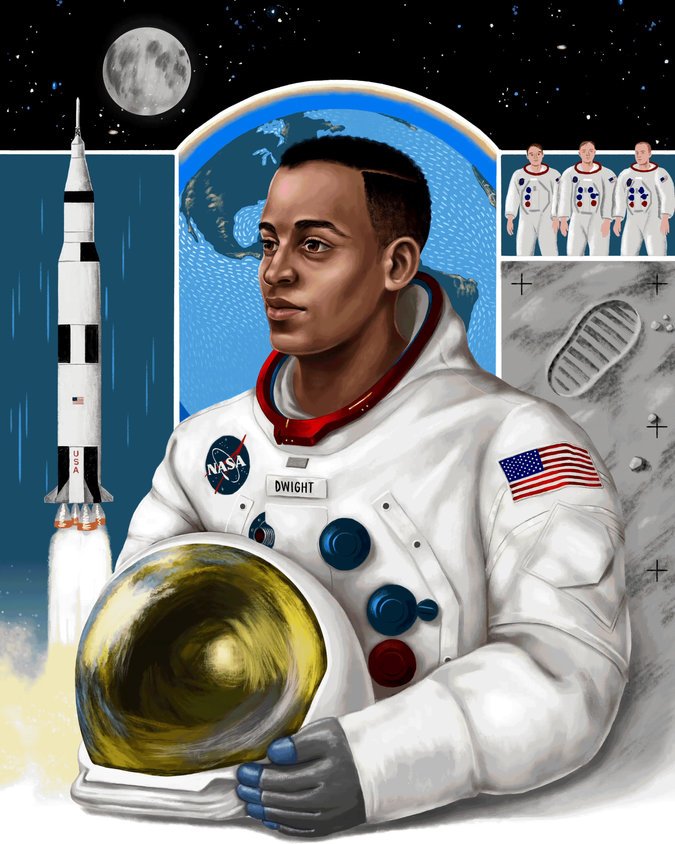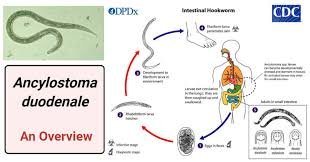When we think there are no more animals of a species, we consider them extinct. A great way to find out whether a creature is extinct is with the ICUN Red list, which marks the animal’s conservation status. But sometimes, animals aren’t actually extinct. We just haven't seen them for a very long time. This is a list of 15 animals that we presumed were extinct, but aren’t.
The Australian Night Parrot
These little cuties disappeared from all records in 1912, and scientists presumed them extinct due to the foxes and cats on the island. Settlers brought them to Australia when they arrived, and they just turned loose. For 78 years we never had a second thought of the bird, and then we found one. Well, not find one alive. Someone in Queensland Australia found one dead on the side of the road. This may not sound huge, but it is important. It means these parrots were still alive. Naturalist John Young spent 15 years looking for the elusive avian, and was awarded in 2013 for photographing a live one. But in March of 2019 the evidence was questioned and the Australian Wildlife Conservancy removed the records. The Australian night parrot is presumed to be alive and is classified as Endangered despite having an unknown population.
Coelacanth
Yes, that annoying as heck, weather-specific Animal Crossing New Horizons fish was presumed extinct. The Coelacanth was known as a living fossil, as it was alive alongside the dinosaurs. This made scientists assume that it went extinct as well. But it didn’t. In 1938 an individual was caught in the Indian Ocean near South Africa. Then again in 1998 near Indonesia. Scientists figured it out because they saw one for purchase at a market stall. After DNA testing, they confirmed it was a Coelacanth, and they are big. Six-feet long and 200 pounds, to be exact, was around how large each specimen was.
New Guinea Big-Eared Bat
This is a quite interesting story. In 1890, a specimen of the New Guinea big-eared bat was found. In 1914 it was named, and then never seen again for over a century. Students at the University of Queensland were studying the effect of logging on microbats. Microbats are bats like these bats and the brown eared bats. The students were collecting species until they found one they didn’t recognize. After comparing it to museum specimens, it was confirmed to be a female New Guinea big-eared bat two years later. Scientists were thrilled at this discovery, but rarely any more have been found. It is currently critically endangered.
Cuban Solenodon
Solenodons are venomous, shrew-like mammals that live on Caribbean islands. There are two species of Solenodon, these solenodons, and Hispaniolan solenodons. Cuban solenodons were declared extinct in 1970, but were rediscovered four years later. Cuban solenodons only live on the island of Cuba, and both species are at risk of extinction due to invasive Asian mongooses.
Terror Skink
The terror skink was first discovered in 1867 when a fossilized skeleton was unearthed. Scientists presumed it was extinct until 1993. In 1993, one was spotted in New Caledonia. There were soon more and more sightings; one in 2000, then one in 2003, another in 2009, again in 2013, and the most recent sighting was in 2018. The reason there are not as many sightings is because the terror skink is thought to only live on two islands of New Caledonia, the island’s size together being 0.35 square miles.
Fernandina Island Tortoise
Believed to be extinct for 100 years, only recently was the Fernandina Island Tortoise rediscovered. In 2019, a 50 year old female tortoise was discovered and was then taken to live in the Galapagos National Park Tortoise Center. Even greater news is that it is believed that there are two more tortoises on the island.
Takahe
These New Zealand ground birds were first discovered by the Maori people and were hunted by them. Europeans on the other hand took 50 years after they arrived. And this is an easy to find bird. It is quite colorful, with its beak being bright red and having a white tail. They are hard to miss in deep swamps. After a specimen was collected in 1898, they seemed to disappear. Most people thought all the dogs and cats ate them, but one was found 50 years later.
Gracilidris Ants
Quite a blast from the past, this little one. They were first discovered in a piece of amber that dated back 15 million years. Most scientists presumed the little insect was far dead, and it was immediately pronounced extinct. But in 2006, the most peculiar thing occurred. In South America, one was found. It turns out they are still alive and well. The reason we didn’t find one for so long is because they burrow deep underground, and only come out during the night. And they are tiny. Less than a centimeter long.
Bermuda Petrel
When Europeans got to Bermuda, they deemed it the island of demons because of the loud avians. Europeans did also play a role in their extinction. They brought the usual dogs and cats, which did most of the dirty work. And the explorers ate the eggs. Great teamwork. But this did end-up making them quote un quote “extinct” in 1620. Thankfully though, over 300 years later 10 nesting pairs were discovered in southern Bermuda. There are an estimated 250 left, but it is everything compared to some animals.
Cross River Gorilla
How could we lose a gorilla, you may be wondering. Well it is quite stupid really. They were found in 1904, then weren’t looked for again and people were like, “Guess they are gone now!” But a group was rediscovered in 1987, with photographic evidence backing it up in 2009.
Attenborough’s Long Beaked Echidna
If you don’t know what an echidna is, it is the other, less popular, monotreme. The hedgehog one. It is also what Knuckles from Sonic the Hedgehog is based off of. This little critter was first discovered in 1961, and wasn’t seen since. Until incredibly recently. In November 2023, one was caught on camera in the Cyclops Mountains of Indonesia. Indonesia! That is incredibly far from Australia, where all other monotremes are found.
Victorian Grassland Earless Dragon
Another Australian creature rediscovered in 2023. It was considered critically endangered in 1960, with the last sighting being in 1969, and being officially called extinct in 2019. But just 4 years later they reappeared, and now we have 16 in the Melbourne Zoo with a breeding program all set up.
Chacoan Peccary
A peccary for those who don’t know is basically a large pig. And shockingly enough, it was only known from fossil records for the longest time. But in 1971 one was found in Argentina! But, we didn’t. Native cultures had known for a long time that it was still around. And Western science didn’t. So is that really a rediscovery?
Wallece’s Giant Bee
And boy is it big. 4 times larger than a European honey bee. It was thought to not even be around for 38 years until 2019 when a female was recorded. The species is at risk for actual extinction though if palm oil production keeps up.
Antioquia Brushfinch
When a birder was on his way to his Sunday mass in 2018, he was shocked to see this little bird. The antioquia brushfinch was thought to be extinct for 50 years, and so it immediately hit newspapers.
There are some creatures that we hope are alive, even though they most likely are extinct. These our the honorable mentions:
Megalodon
The Megaledon was the largest shark ever to live. It ate whales, and other large creatures. Its closest relative is the great white, and it lived during the time of the dinosaurs. Yes you read that right. Dinosaurs. Why do we think that this prehistoric creature is still alive today? Well, it is a popular conspiracy theory. But it is highly unlikely that it still roams the Earth today.
Ivory-Billed Woodpecker
The largest woodpecker in history, with a two foot wingspan. And still, probably, alive. There have been many sightings of it after its extinction. Bobby Harrison has searched for the bird, even after being called extinct for the second time in 2021. In 2020, he got a video of one. He has searched for the bird everyday in Arkansas for 2020 years in 2023. And scientists have a recording of a call that was confirmed to be an ivory bill's. There has been a lot of documentation, and it is one of the believed creatures to bounce back.
Thylacine
The most popular extinct creature predicted to come back. It is also known as the Tasmanian Tiger. Their range extended from New Guinea, Australia, and Tasmania. The reason they weren’t in New Guinea and Australia is because they were forced out by dingos. Settlers brought dogs over that evolved into dingos. The dingos never got Tasmania though, and the species thrived. Until Europeans came and killed them all out of fear for their sheep. Again, great job Europeans. There have been many sightings, though a lot turn out to be foxes infected with mange, a disease. And then there is Colossal. Colossal is a company that is trying to revive and create their own thylacine. They are doing this so that Tasmania’s food chain can be back in balance, as the Tasmanian Tiger was the apex predator. So, this has the most hope of all.
But there is something important to note in every one of these back from the dead animals. They are still at risk. Yes they may be alive, but how many are there? There could be as many as a million, or as little as 500. All these creatures need help, and it is important that they are still around. We don’t want any repeats of the thylacine. And then there are creatures that are at risk to be completely wiped out. Vaquitas tonkin snub-nosed monkeys, Chinese pangolins, all of these creatures are at high risk of extinction. Vaquitas have only 6 left. 6. We don’t want to lose anymore animals, and so try to support them.
Sources: BBC Wildlife, AZ Animals, Garden & Gun.




















